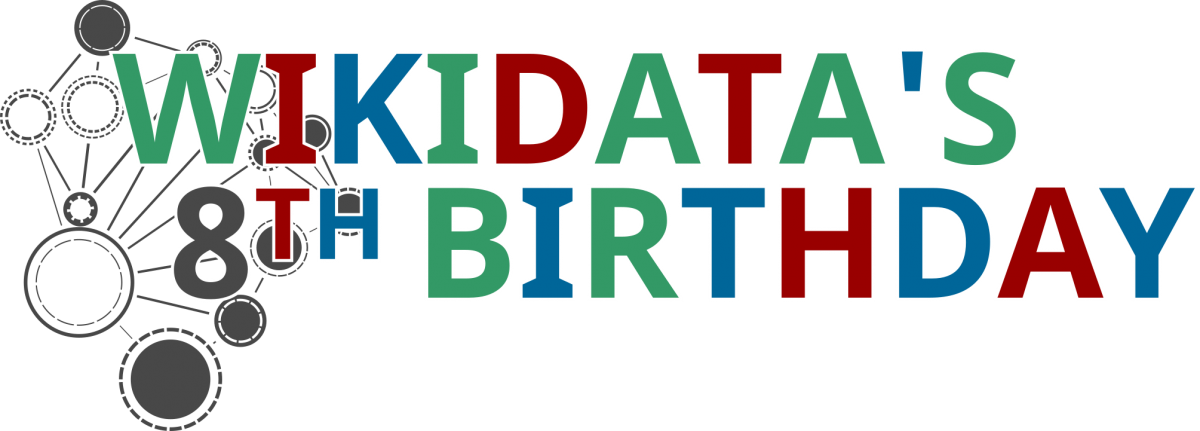It’s Wikidata’s 8th birthday today, and we’re incredibly proud of Wikipedia’s lesser known little sister. Twenty years ago an incredible idea was made reality in the form of a democratic encyclopedia built from the bottom up, all by volunteers with no corporate influence or advertisement. Now, there are many projects related to Wikipedia that make the Internet a truly very different place than if we’d gone without them. Wikidata is like Wikipedia for computers. Collectively we’ve become aware of just how much data there is out in the world, but most of it is held by private companies for their own gains. So Wikidata stepped up. A free, democratically created software that has no agenda beyond the spread of information for the betterment of human knowledge. It’s a noble goal, and seemingly a fool’s errand. But Wikipedia worked, and now, so is Wikidata.
Say you want to find out where all the paintings by Van Gogh are housed? A bit of googling and digging would be needed, and unless someone’s made a specific web page listing such information, it’d take you a while. What about something a little more complex, like a list of all the self-portraits by female artists? It’s questions like these that Wikidata’s working towards answering with one simple search query, and projects like Crotos, a Wikidata-driven tool for exploring the world’s artworks from hundreds of different collections, that have spawned from Wikidata.
A number of our programmes use Wikidata to create something truly brilliant. Take the award winning Scottish Witches Map. A pretty design with a sobering bit of history, the visuals of seeing where Scottish witches were accused, their story, and what happened to them is an excellent example of what can be achieved with Wikidata. Scottish Equate Scotland student intern, Emma Carroll, worked with Wikimedian in Residence at the University of Edinburgh, Ewan McAndrew, during the summer 2019 to geolocate the place names recorded in the Survey of Scottish Witchcraft Database (1563 to 1736), and find the place of residence of 3,141 accused Scottish witches.
Through Emma’s detective work c.500 place-names have been located using Ordnance Survey maps, place-name books, historical maps, and gazetteers. This data was uploaded into Wikidata, as linked open data and further enriched with the location of detentions, trials, place of death, and more. Richard Lawson, ISG web developer, provided the technical expertise for the new website and graphic design was contributed by Interactive Content Manager Stewart Lamb Cromar.
It builds on the university’s breakthrough work on the Scottish Witchcraft Survey which brought to life the persecution of women during the period, with many burned at the stake or drowned. Ewan McAndrew, Wikimedian in Residence at the University of Edinburgh, said: “The map is a really effective way to connect where we are now to these stories of the past.”
“The tragedy is that Scotland had five times the number of executions of women. The idea of being able to plot these on a map really brings it home. These places are near everyone.
“There does seem to be a growing movement that we need to be remembering these women, remembering what happened and understanding what happened”
Emma Carroll, Equate Scotland Careerwise Intern (or ‘Witchfinder General’) said, “not only does the project help highlight the power of data science but also shows the capability of Wikidata to aid in the making of all of the different visualisations.”
The surfacing of the witchcraft data as linked open data to Wikidata has motivated Design Informatics Masters students each year since 2017 and showed what is possible both for the teaching of data science and for furthering discovery and engagement with real world research datasets.
The Mapping the Scottish Reformation project has since been inspired by the Map of Accused Witches project and are collaborating with Ewan McAndrew and the university’s Interactive Content team to build a new map website, powered by Wikidata.
It’s a truly beautiful interactive map, with an important and harrowing bit of information that’s critical to our understanding of women and marginalised people’s history.
Dr Martin Poulter is a long time Wikimedian and resident of ours, first at the University of Oxford where he worked on a project using Wikidata to describe its library and museum collections. And he is currently using the platform to describe the private collections of Sir David Khalili.
“Wikidata links the world’s cultural and scientific archives together into a web of knowledge,” Martin says. “I’ve learned things through Wikidata that otherwise would have required hundreds of different websites and databases. Anyone writing software can tap into this vast free resource with billions of facts; it has transformed how we visualise our cultural heritage. Text isn’t always the best way to share knowledge: people want something interactive they can explore and see where their curiosity takes them. Wikidata’s many graphical interfaces let them do that, and in hundreds of different languages.” – Martin Poulter.
The capabilities and visuals of Wikidata are truly a magnificent achievement, and that it’s run by volunteers when so many people’s mantra is ‘time is money’ only makes it more remarkable. We’re continually impressed by this fantastically clever little bit of software and the community that has built and keeps on building it. So Happy Birthday Wikidata, here’s to many more years.






